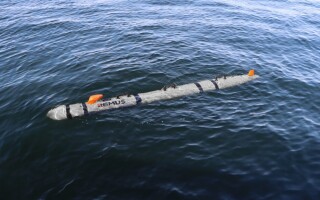DSEI, VPX, COTS boards, and a bit of DSP history
BlogSeptember 28, 2015
Nearly two decades after I last manned a stand at the Defence and Security Equipment International (DSEI) show in London, I strolled the halls again this month. There I found floating point digital signal processing (DSP) has overtaken fixed point as the preferred method for military signal processing applications and that VPX is remarkably popular despite its expensive price tag. I also re-established that DSEI is still a one-stop show of military suppliers selling everything from radar processing boards to electric socks for frigid deployments.
The main reason I was attending this year was to introduce our VF360 product on Parsec’s booth. Thanks to my exhibitor pass it was quick to enter the high-security check-through as well. So happy.
DSEI has not really changed, in as much as you can see/buy 100-percent water-proof socks (special show price = USD65.00) or a fully integrated missile system (price on application) – and in-between a lot of commercial-off-the-shelf (COTS) hardware, based on a handful of different form-factors and standards, such as CompactPCI, PC/104, OpenVPX, COM-Express and still our old favorite VME. I estimated about 30x different board manufacturers and a possible 100x vendors were in attendance from all parts of the world.
In my up/down aisles traveling I noticed solution based on VITA 75 small-form-factor enclosure formats with integrated PCIe/104 Express for I/O expansion. One concept had a COMExpress concept of carrier + system-on-module as the SBC and with PCIe/104 as expansion; also EPIC-Express and EBX-Express based solution with PCIe/104 Express as I/O; an ATR form-factor box full of PCIe/104 boards and NVIDIA’s GPUs for impressive graphics. The NVIDIA K1 (multiple ARMs + CUDA GPU) chip was also found on a number of boards and now it appears that NVIDIA is breaking-out into the embedded arena and I shall wish them luck. May they develop/debug on a $350.00 HP Chromebook and commission code on a battleship!
My real fun was exploring the breadth of VPX products at the show, but before I do that allow me to provide a bit of background and why I am so excited about the popularity of floating point with VPX systems.
DSP history and floating point
Almost two decades ago, Sundance – our company – was, as now, busy trying to make multiprocessing the best thing since sliced-bread. We launched a number of modules with the 50MHz floating-point DSP from Texas Instruments, called TMS320C4x. It was on a module standard called “TIM” – how simple, as stood for Texas Instrument Module. The unique idea was to route all communication ports – 20MHz @ 8-bit parallel – to a connector to enable four modules to be integrated onto the main industry (only one, really..) standard COTS board, the VME.
We also exhibited it at DSEI and it was very successful concept. It took me around the world to visit clients and among them a company in South Africa -- Parsec -- as mentioned above. They became business partners and good friends.
The friendship is still solid, but the business came to an abrupt end, as Texas Instruments had the foresight that fixed-point DSPs was for them, rather than floating-point. Their view was that a very fast single-core DSP was much better than many slower multicores. The client in South Africa went down another route, using PowerPC on VME for their radar systems. Lots of other clients went down x86 route, as Intel was a safe-heaven. Again, lots of clients combined a CPU with a FPGA.
However, what comes around; goes around - and back to now!
When my friends in Parsec came to visit me and introduce the next generation of processing nodes for their secret radar client, then I could not stop myself jumping into the air with excitement. Somehow, Parsec had managed to integrate a large Altera Stratix-V FPGA with a VITA 57.1 FMC for adding ‘bespoke’ I/O and a PCI Express switch for scaling multiple boards. It’s all integrated into a 3U OpenVPX format with either air-cooling or conductive cooling. The surprise was to find a TI DSP, with either 1x, 4x or 8x Cores running @ 1GHz and some local DDR3 memory. The TMS320C667x is not just any flavor of DSP… - it is a floating-point DSP and furthermore, can run Linux on one of its cores.
Multiple boards can be integrated into a system for even more multiprocessing power, as the PCI switch can connect them into any topologic. Wow… - that would have taken at least 6x VME cards in the 20th Century!
Speaking of OpenVPX…
The range of VPX enclosures at DSEI was very impressive and the cost of some of them made me feel dizzy. Since my newly found love is a now OpenVPX, then this had my interest. Each vendor has at least two - three variations of enclosures for various configurations, markets and applications. I was not only dizzy, I was totally confused.
One very fascinating aspect of the VITA 65 OpenVPX standard… - is that it is more of a recommendation, than something in solid concrete. Wearing my PC/104 Technical Chair hat I was horrified to discover that the backplane connector could have different and incompatible signals and it would never happen for PC/104 stacks. However, for Sundance and building a multiprocessing solution, then it’s perfect! Selling a COTS solution, based on OpenVPX and do a lock-in of the customer sounds like a marvellous idea – for them and me!
What to do??
Actually, I am totally blank for ideas, suggestions, or concepts to solve this conundrum. Even after a few days of thinking about it. Try comparing this with the venerable automobile industry – more than 100 years old now. History will teach us everything or nothing, depending on how you view it.
Each car vendor is now spending more money on making components that are incompatible with competitors, rather than making them interchangeable from car to car. Just think about left-hand or right-hand incompatibility.
I think, although, that the electronics industry is ahead of the car industry curve as semiconductors needs DC-only voltage (typical converted from an AC source…), whereas personal cars either need diesel or petrol/gas. This later fact might not be true for much longer with the latest environmental impact studies done about diesel and Volkswagen’s official screw-up, but that is another story.
Conclusion
I have reluctantly conceded that, at least for now regarding youthful OpenVPX standard – only five years old – that each application needs a dedicated enclosure solution to maximize its performance. It’s just the facts. However, the VITA Standards Organization (VSO) and for that matter the PC/104 Consortium should really try to make it easier for customers to shop-around.
Until such a point in history, maybe in another 100 years, it will be a case of lots of people saying here we are, talking about yet another box! In other words lots of “YaBs.” The next time you walk a show floor, then look around and you will see more YaBs, than people – and maybe you will agree with my thoughts above and support the idea that an open standard is more than the size of PCB board.





